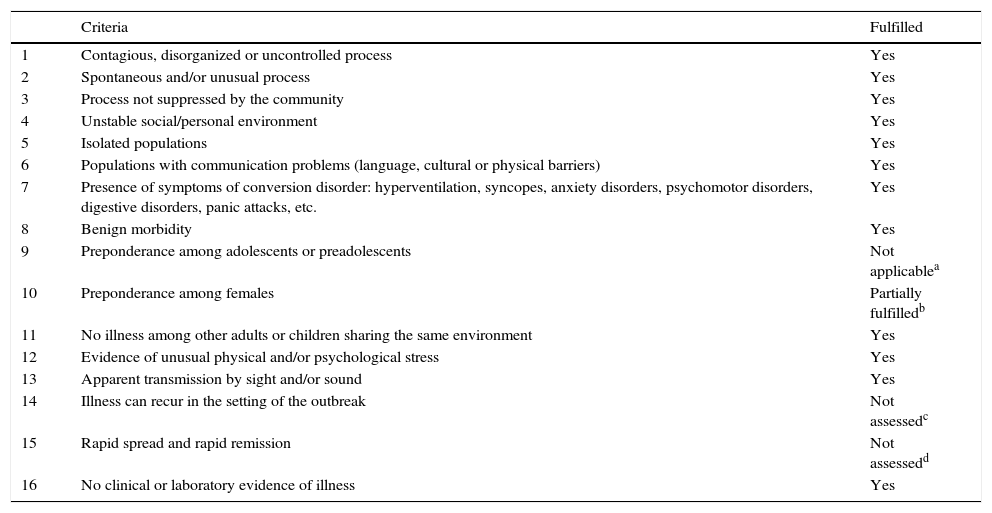Recent reports of outbreaks of lipoatrophia semicircularis (LS) in various countries have generated discussion regarding the potential role of the environmental characteristics of office workplaces in new buildings. The objective of this study was to investigate a suspected outbreak of LS among children in a public school in Barcelona, which generated tremendous alarm.
MethodsWe performed an epidemiological assessment including descriptive and prevalence analyses, and an environmental investigation followed by a psychiatric assessment according to Small's criteria. We compared the prevalence of LS and its 95% confidence interval between children and staff attending the day-care centre under study and other centres.
ResultsAmong 86 children attending a day-care centre we detected 11 confirmed and 2 possible cases of LS (15.1%) while among 41 children attending other day-care centres we identified 8 cases and 4 possible cases (29.3%) (p=0.10). Among 12 day-care staff, we detected 8 cases of LS (66.7%) while among 19 women working different jobs we identified 14 with the same condition as the staff (73.7%) (p=0.98). All lesions were finally classified as indentations with different locations. The environmental evaluation didn’t identify any exposure factors with a significant role in the onset of the outbreak. The outbreak shared 13 of Small's 16 criteria regarding epidemic somatoform disorder (“mass hysteria”).
ConclusionThe presence of indentations can be considered a normal variant in the lower extremities of children. The characteristic development of the process leads us to the conclusion that this outbreak was an epidemic somatoform disorder.
Los informes recientes sobre brotes de lipoatrofia semicircular (LS) en diversos países han generado debate acerca del papel potencial de las características ambientales de los puestos de trabajo en los nuevos edificios. El objetivo de este estudio fue investigar la sospecha de un brote de LS entre los niños de una guardería pública de Barcelona, lo cual generó una tremenda alarma.
MétodosRealizamos una valoración epidemiológica, incluyendo análisis descriptivo y de prevalencia, y una investigación ambiental seguida de una valoración psiquiátrica de acuerdo con los criterios de Small. Comparamos la prevalencia de LS y su intervalo de confianza del 95% entre los niños y entre el personal de la guardería en estudio, y con otros centros.
ResultadosEntre los 86 niños que acudieron a la guardería detectamos 11 casos confirmados y 2 casos posibles de LS (15,1%), y entre los 41 niños que acudieron a otros centros identificamos 8 casos confirmados y 4 casos posibles (29,3%) (p=0,10). Entre el personal de la guardería, detectamos 8 casos de LS (66,7%), y entre las 19 mujeres que trabajaban en otros sitios identificamos 14 con la misma condición que el personal (73,7%) (p=0,98). Se clasificaron finalmente todas las lesiones como hendiduras con diferentes localizaciones. La evaluación ambiental no identificó ningún factor de riesgo con relación significativa con la aparición del brote. Dicho brote compartió 13 de los criterios de Small en relación con el trastorno somatoforme epidémico («histeria colectiva»).
ConclusiónLa presencia de hendiduras puede considerarse como una variante de la normalidad en las extremidades inferiores de los niños. El desarrollo característico del proceso nos conduce a la conclusión de que este brote fue un trastorno somatoforme epidémico.










